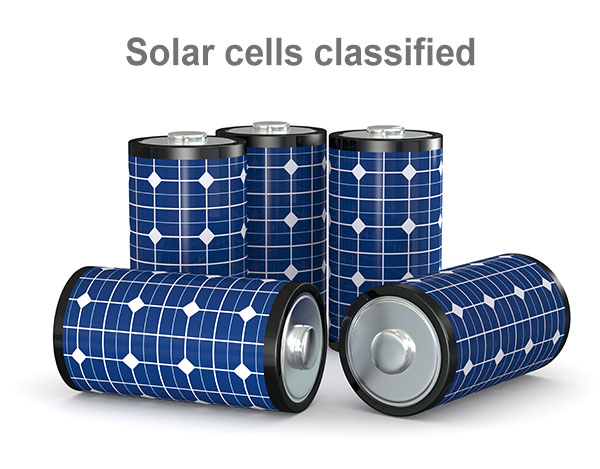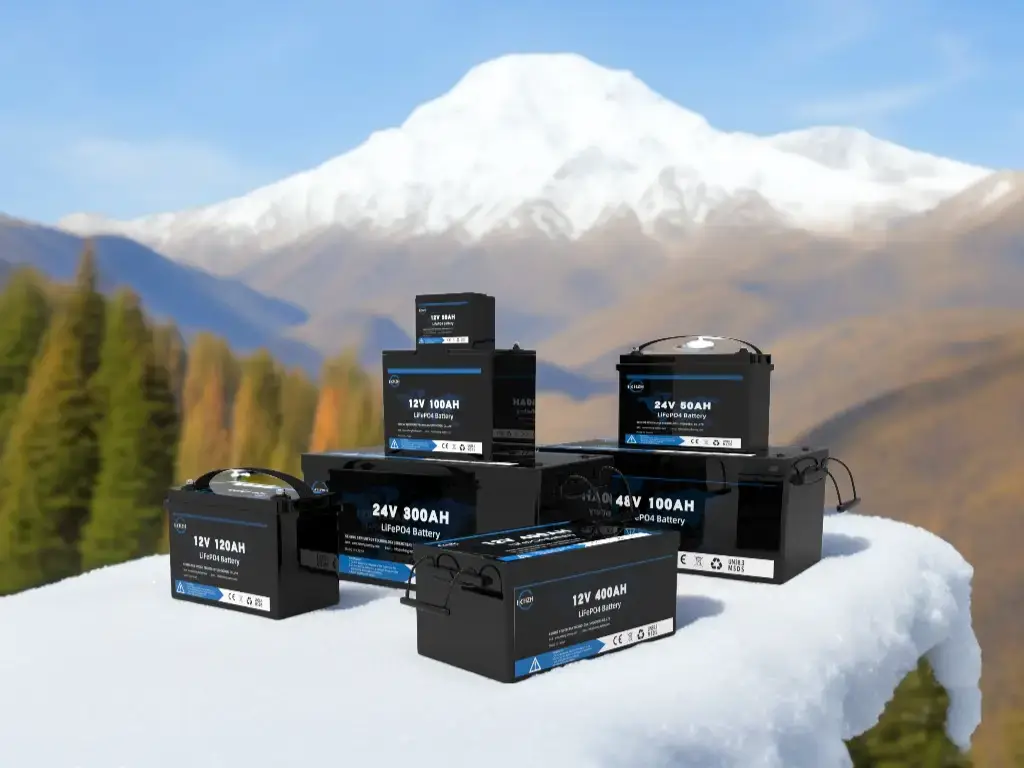
How are solar cells classified
Solar cells, also known as photovoltaic cells, are devices that directly convert solar radiation energy into electrical energy.
This device is encapsulated into solar cell modules, and then a certain number of modules are combined into a certain power solar cell array according to the needs. Battery power generation system, also known as photovoltaic power generation system.
Solar cells, also known as photovoltaic cells, are devices that directly convert solar radiation energy into electrical energy.
This device is encapsulated into solar cell modules, and then a certain number of modules are combined into a certain power solar cell array according to the needs. Battery power generation system, also known as photovoltaic power generation system.
What do solar cells do?
Photovoltaic cells convert sunlight into electricity
A photovoltaic (PV) cell, commonly called a solar cell, is a nonmechanical device that converts sunlight directly into electricity. Some PV cells can convert artificial light into electricity.
The core device of solar photovoltaic power generation is the solar cell.
The development history of solar cells has gone through a long development history of more than 160 years. From the overall development point of view, basic research and technological progress have played an active role in promoting, so far, the basic structure and mechanism of solar cells have not changed.
How do solar cells work simple?
A solar cell is made up of two layers of silicon that are treated to let electricity flow through them when exposed to sunlight. One layer is positively charged, the other negatively charged. As photons enter the layers, they give up their energy to the atoms in the silicon in the form of electrons.
Solar cells are classified by structure
Ø Homogeneous junction solar cells Ø Heterogeneous junction solar cells Ø Schottky solar cells
Solar cells are classified by material
Silicon solar cells
Multi-compound thin film solar cells
Organic Compound Solar Cells
Sensitized Nanocrystalline Solar Cells
Polymer multilayer modified electrode solar cells
Solar cells are classified according to their working methods
Flat panel solar cells
Concentrating solar cells
Spectroscopic solar cells
The first generation: monocrystalline silicon and polycrystalline silicon, accounting for about 89.9% of the solar cell product market. The first generation of solar cells is based on silicon wafers, mainly using monocrystalline silicon and polycrystalline silicon as materials. Among them, the conversion efficiency of single crystal silicon cells is the highest, which can reach 18-20%, but the production cost is high.
The second generation: thin-film solar cells, accounting for 9.9% of the solar cell product market. The second-generation solar cells are based on thin-film technology and mainly use amorphous silicon and oxides as materials. The efficiency is lower than the first generation, the highest conversion efficiency is 13%, but the production cost is the lowest.
The third generation: compound thin film solar cells such as copper indium selenide (CIS) and thin film Si solar cells. Mainly in the state of laboratory production, there are potential huge economic effects due to its high efficiency and low cost.
Silicon solar cells can be divided into:
1) Monocrystalline silicon solar cells
2) Polycrystalline silicon thin film solar cells
3) Amorphous silicon thin film solar cells
Monocrystalline silicon solar cells
Monocrystalline silicon solar cells are solar cells made of high-purity monocrystalline silicon rods, which have the highest conversion efficiency and the most mature technology. High-performance monocrystalline silicon cells are based on high-quality monocrystalline silicon materials and related thermal processing techniques.
Amorphous silicon thin film solar cells
The silicon used in amorphous silicon thin film solar cells is a-Si. Its basic structure is not a pn junction but a pin junction. Doping boron to form p region, doping phosphorus to form n region, i is a non-impurity or lightly doped intrinsic layer.
Salient features:
Low cost of materials and manufacturing processes.
The production process is a low temperature process (100-300 ℃), and the energy consumption is low.
It is easy to form large-scale production capacity, and the whole process of production can be automated.
There are many varieties and wide uses.
There are problems: the optical band gap is 1.7eV → insensitive to the long wavelength region → low conversion efficiency
Photodegradation effect: photoelectric efficiency decays with the continuation of illumination time
Solution: prepare tandem solar cells, that is, deposit one or more p-i-n sub-cells on the prepared p-i-n single-junction solar cells.
Production methods: reactive sputtering, PECVD, LPCVD.
Reactive gas: SiH4 diluted with H2
Substrate material: glass, stainless steel, etc.
Polycrystalline silicon solar cells
Polycrystalline silicon thin film solar cells grow polycrystalline silicon thin films on low-cost substrate materials, and use a relatively thin crystalline silicon layer as the active layer of solar cells, which not only maintains the high performance and stability of crystalline silicon solar cells, but also the amount of materials used. A substantial drop, significantly reducing battery costs. The working principle of polycrystalline silicon thin film solar cells is the same as other solar cells, which is based on the interaction of sunlight and semiconductor materials to form photovoltaic effect.
Common preparation methods:
Low pressure chemical vapor deposition (LPCVD)
Plasma Enhanced Chemical Vapor Deposition (PECVD)
Liquid phase epitaxy (LPPE)
Sputter deposition method
Reactive gas SiH2Cl2, SiHCl3, SiCl4 or SiH4
↓ (under a certain protective atmosphere)
Silicon atoms are deposited on heated substrates
(The substrate material is Si, SiO2, Si3N4, etc.)
Problems: It is difficult to form larger grains on non-silicon substrates, and it is easy to form voids between grains
Solution: first use LPCVD to indense a thin layer of amorphous silicon on the substrate, then anneal this layer of amorphous silicon to obtain larger crystal grains, and then deposit a thick layer on the seed crystal. polysilicon film.
Since polycrystalline silicon thin film cells use less silicon than single crystal silicon, there is no problem of efficiency decline, and it is possible to prepare on cheap substrate materials. The cost is much lower than that of single crystal silicon cells, and the efficiency is higher than that of amorphous silicon thin film cells. , Therefore, polycrystalline silicon thin film cells will soon dominate the solar power market.
Multi-compound thin film solar cells
The multi-compound thin film solar cell materials are inorganic salts, which mainly include gallium arsenide III-V group compounds, cadmium sulfide, cadmium telluride and copper indium selenide thin film batteries.
The efficiency of cadmium sulfide and cadmium telluride polycrystalline thin film cells is higher than that of amorphous silicon thin film solar cells, and the cost is lower than that of monocrystalline silicon cells, and it is also easy to mass produce, but because cadmium is highly toxic, it will cause serious damage to the environment. Pollution, therefore, is not the most ideal replacement for crystalline silicon solar cells.
The conversion efficiency of gallium arsenide III-V compound cells can reach 28%. The gallium arsenide compound material has a very ideal optical band gap and high absorption efficiency. It has strong radiation resistance and is insensitive to heat. It is suitable for manufacturing high-efficiency Single junction battery. However, the high price of gallium arsenide materials limits the popularity of gallium arsenide batteries to a large extent.
Copper indium selenide thin film battery (abbreviated as CIS) is suitable for photoelectric conversion, and there is no problem of light-induced degradation effect, and the conversion efficiency is the same as that of polysilicon. With the advantages of low price, good performance and simple process, it will become an important direction for the development of solar cells in the future. The only problem is the source of the material. Since both indium and selenium are relatively rare elements, the development of such batteries is bound to be limited.
Organic Compound Solar Cells
Organic solar cells use organic substances with photosensitive properties as semiconductor materials to generate voltage and form current through photovoltaic effect. Organic solar cells can be divided into single junction structure, pn heterojunction structure and dye-sensitized nanocrystalline structure according to the semiconductor material.
According to relevant survey data, the average cost of organic solar cells is only 10%–20% of that of silicon solar cells; however, the photoelectric conversion efficiency of organic solar cells currently on the market is only 10% at the highest, which is the main problem that restricts its comprehensive promotion. . Therefore, how to improve the photoelectric conversion rate is the key problem that should be solved in the future.
Sensitized Nanocrystalline Solar Cells
The dye-sensitized TiO2 solar cell is actually a photoelectrochemical cell. In 1991, a research group led by Prof. Michael Grätzel from the Ecole Polytechnique de Lausanne (EPFL) in Switzerland used an inexpensive wide-bandgap oxide semiconductor TiO2 to prepare nanocrystalline thin films on which a large number of carboxylic acid-bipyridine Ru(II) complexes were adsorbed. A dye-sensitized nanocrystalline solar cell is developed by using a low-volatile salt containing redox pairs as the electrolyte.
The advantages of nanocrystalline TiO2 solar cells lie in their low cost, simple process and stable performance. Its photoelectric efficiency is stable at more than 10%, the production cost is only 1/5 to 1/10 of that of silicon solar cells, and its service life can reach more than 20 years. However, the research and development of such batteries has just started, and it is estimated that they will gradually enter the market in the near future.
Fundamental:
The dye molecule absorbs sunlight energy and transitions to the excited state, the excited state is unstable, electrons are rapidly injected into the conduction band of the adjacent TiO2, and the electrons lost in the dye are quickly compensated from the electrolyte, and the electrons entering the conduction band of TiO2 eventually enter The conductive film then generates a photocurrent through the outer loop.
Polymer multilayer modified electrode solar cells
Replacing inorganic materials with organic polymers is an emerging research direction for solar cell fabrication. Due to the advantages of good flexibility, easy fabrication, wide material sources, and low cost of organic materials, it is of great significance for the large-scale utilization of solar energy and the provision of cheap electricity.
The research on the preparation of solar cells with organic materials has only just begun, and neither the service life nor the cell efficiency can be compared with inorganic materials, especially silicon cells. Whether it can be developed into a product with practical significance remains to be further studied and explored.
Keheng solar energy storage battery
With the technological progress and cost advantages of lithium iron phosphate batteries becoming more and more obvious, the current solar energy storage batteries are almost lithium iron phosphate batteries.
Lithium iron phosphate batteries have the following advantages
High safety performance
Long life:
The cycle life of long-life lead-acid batteries is about 300 times, and the maximum is 500 times, while the cycle life of lithium iron phosphate power batteries can reach more than 2,000 times, and the standard charging (5-hour rate) use can reach 2,000 times.
Good high temperature performance
the electric heating peak of lithium iron phosphate can reach 350℃-500℃, while lithium manganate and lithium cobaltate are only around 200℃. Wide operating temperature range (-20C–75C), with high temperature resistance, the electric heating peak of lithium iron phosphate can reach 350℃-500℃, while lithium manganate and lithium cobaltate are only around 200℃.
High energy density
Light weight
Environmental protection
Keheng solar energy storage battery is widely used in home energy storage and telecommunication base station UPS power supply, portable outdoor power supply.
DEEP CYCLE BATTERIES With BMS(lifepo4 Lithium Battery)
Low Temperature 24V 60AH Deep Cycle LiFePO4 Battery
Low Temperature 48V 50AH Deep Cycle LiFePO4 Battery
Low Temperature 48V 100AH Deep Cycle LiFePO4 Battery
Low Temperature 48V 200AH Deep Cycle LiFePO4 Battery




